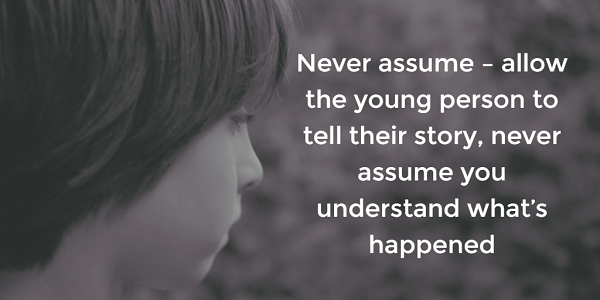When we take a little time to understand the reasons young people self-harm, it quickly becomes apparent that we need to tailor our response to reflect those reasons.

If we respond with a one size fits all approach to self-harm, we might help in the short term, but if we want to provide safe, sensitive, sustainable support, we need to dig a little deeper.
The answers to this are infinite, and a young person may self-harm for a range of different reasons at different times. To understand the ‘why’ of any specific incident we need to explore what the motivation was to the young person in harming themselves in that way at that time.
Young people presenting with similar looking injuries might have a whole range of different motivations, for example, three young people, when asked about cutting themselves, gave these very different responses:
Many young people won’t initially be able to explain why they self-harmed, either because it was very impulsive, they are too emotional to think, explore and explain rationally or because they simply don’t have the skills needed to communicate what was happening in their head at the time.
In order to enable young people to begin to explain the reasons for their self-harm we should:
When we begin to understand the range of motivations that might underlie a behaviour that superficially looks similar, then the need to tailor our response when supporting the young person concerned becomes self-evident.
Taking the young people quoted above for example, the young person who needed to find a way to vent their anger might explore alternatives such as exercising hard, screaming into a pillow or writing a letter about the reason for their anger then tearing it up. These suggestions would make far less sense if posed to the young person with depression or who felt a need to punish themselves.
There are a few steps you can follow – it will take practice to get the hang of working in this way, but it really is worthwhile and will help the young person work towards sustainable recovery.
Change won’t happen overnight and it’s important to celebrate even minor successes rather than dwell on failures.
As the young person begins to understand their own emotions better and to find healthier ways of coping with them, you will begin to see a steady decrease in their self-harming behaviour. Support will need to continue for some time, even once the self-harming has stopped in order to prevent relapse.